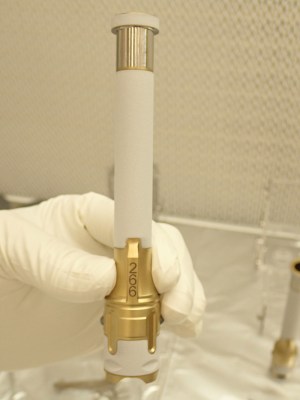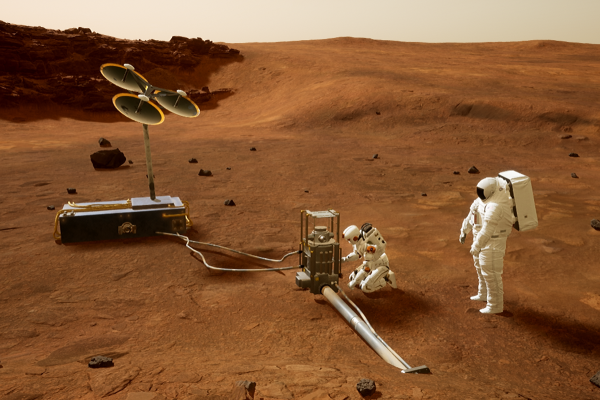Remember the chip shortage? We sure do, mainly because as far as we can tell, it’s still going on, at least judging by the fact that you can’t get a Raspberry Pi for love or money. But that must just be noise, because according to a report in the Straits Times, the chip shortage is not only over, it’s reversed course enough that there’s now a glut of semiconductors out there. The article claims that the root cause of this is slowing demand for products like smartphones, an industry that’s seeing wave after wave of orders to semiconductor manufacturers like TSMC canceled. Chips for PCs are apparently in abundance now too, as the spasm of panic buying machine for remote working during the pandemic winds down. Automakers are still feeling the pinch, though, so much so that Toyota is now shipping only one smart key with new cars, instead of the usual two. So there seems to be some way to go before balance is restored to the market, but whatever — just call us when Amazon no longer has to offer financing on an 8 GB Pi.
mars103 Articles
Martian Successes Reshape Sample Return Plans
For as long as humans have been sending probes to Mars, there’s been a desire to return rock, soil, and atmosphere samples back to Earth for more detailed analysis. But the physics of such a mission are particularly demanding — a vehicle that could land on the Martian surface, collect samples, and then launch itself back into orbit for the return to Earth would be massive and prohibitively expensive with our current technology.

Instead, NASA and their international partners have been working to distribute the cost and complexity of the mission among several different vehicles. In fact, the first phase of the program is well underway.
The Perseverance rover has been collecting samples and storing them in 15 cm (6 inch) titanium tubes since it landed on the Red Planet in February of 2021. Considerable progress has also been made on the Mars Ascent Vehicle (MAV) which will carry the samples from the surface and into orbit around the planet, where they will eventually be picked up by yet another vehicle which will ultimately return them to Earth.
But there’s still some large gaps in the overall plan. Chief among them is how the samples are to be transferred into the MAV. Previously, the European Space Agency (ESA) was to contribute a small “fetch rover” which would collect the sample tubes dropped by Perseverance and bring them to the MAV launch site.
But in a recent press release, NASA has announced that those plans have changed significantly, thanks at least in part to the incredible success of the agency’s current Mars missions.
Continue reading “Martian Successes Reshape Sample Return Plans”
Hackaday Links: July 24, 2022
OK, maybe that won’t buff right out. NASA has released a more detailed analysis of the damage suffered by the James Webb Space Telescope in a run-in with a micrometeoroid, and has deemed the damage “uncorrectable”. Not that any damage to JWST is correctable, at least in the sense that the Hubble Space Telescope was able to be fitted with optics to fix its precisely-yet-inaccurately-ground main mirror. JWST is far too remote for a service call, so correctability in this case refers to a combination of what can be accomplished by tweaking the shape and position of the affected mirror segment, and what can be taken care of with image processing. The damage to segment C3, as well as damage to the other segments in a total of six collisions in the half year Webb has been on station, are assessed via “wavefront sensing”, which looks at how out of phase the light coming from each mirror segment is. The damage sounds bad, and it certainly must hurt for the techs and engineers who so lovingly and painstakingly built the thing to see it dinged up already, but in the long run, this damage shouldn’t hamper Webb’s long-term science goals.
In other space news, we hear that the Perseverance rover has taken its first chunk out of the ancient river delta in Jezero Crater. The rover has been poking around looking for something interesting to sample, but everything it tried out with its abrading tool was either too brittle, too hard to get at, or scientifically dull. Eventually the rover found a good spot to drill, and managed to bring up a 6.7-cm core sample. This makes the tenth core sample collected overall, and the first from the delta area, which is thought to have the best chance to contain evidence of ancient Martian life.
Closer to home, we’ve all likely heard of robotic surgery, but the image that conjures up doesn’t really comport with reality. Robot-assisted surgery is probably a better term, since surgical robots are generally just ultra-precise remote manipulators that are guided by a skilled surgeon. But if a study on surgery robot performance is any indication, the days of human surgeons might be numbered. The study compared accuracy and speed of both a human surgeon controlling a standard Da Vinci surgical robot and an autonomous version of the robot alone, using a depth camera for sensing. Using a standard surgical skills test, the autonomous system matched the human surgeons in terms of failures — thankfully, no “oopsies” for either — but bested the humans in speed and positional accuracy. It’ll probably be a while before fully autonomous surgeons are a thing, but we wouldn’t be betting against it in the long run.
Most readers will no doubt have heard the exciting news that Supercon will be back this year as an in-person event! Make sure you set aside the first weekend in November to make the pilgrimage to Pasadena — it’ll be great seeing everyone again after the long absence. But if you just can’t wait till November for an IRL con, consider dropping by SCALE 19X, coming up this week in Los Angeles. The Southern California Linux Expo is being held July 28 through 31, and features a ton of speakers, including a keynote by Vint Cerf. Hackaday readers can save 50% on tickets with promo code HACK.
And finally, as a lover of Easter eggs of all kinds, but specifically of the hidden message in software variety, we appreciated this ode to the Easter egg, the embedded artistry that has served as a creative outlet for programmers over the years. The article lists a few great examples of the art form, along with explaining why they’re actually important artifacts of the tech world and what they’re good for. We tried out a few of the ones listed in the article that we hadn’t heard of before; some hits, some misses, but they’re all appreciated. Well, most of them — the corporate rah-rah kind can bugger straight off as far as we’re concerned.
Hackaday Links: June 5, 2022
The big news this week comes from the world of medicine, where a woman has received a 3D-printed ear transplant. The 20-year-old woman suffered from microtia, a rare congenital deformity that left her without a pinna, the external structure of the ear. Using scans of the normal ear, doctors were able to make a 3D model of what the missing pinna should look like. Raw material for the print was taken from the vestigial ear of the patient in the form of cartilage cells, or chondrocytes. The ear was printed using a bioprinter, which is a bit like an inkjet printer. The newly printed ear was placed into a protective structure and transplanted. The operation was done in March, and the results are pretty dramatic. With a little squinting, it does look a bit like there are some printing artifacts in the ear, but we’d imagine that’s more from the protective cage that was over the ear as it healed.
Hackaday Links: May 22, 2022
It looks like it’s soon to be lights out for the Mars InSight lander. In the two years that the lander has been studying the geophysics of Mars from its lonely post on Elysium Planitia, InSight’s twin solar arrays have been collecting dust, and now are so dirty that they’re only making about 500 watt-hours per sol, barely enough to run the science packages on the lander. And that’s likely to worsen as the Martian winter begins, which will put more dust in the sky and lower the angle of the Sun, reducing the sunlight that’s incident to the panels. Barring a “cleaning event” courtesy of a well-placed whirlwind, NASA plans to shut almost everything down on the lander other than the seismometer, which has already captured thousands of marsquakes, and the internal heaters needed to survive the cold Martian nights. They’re putting a brave face on it, emphasizing the continuing science and the mission’s accomplishments. But barely two years of science and a failed high-profile experiment aren’t quite what we’ve come to expect from NASA missions, especially one with an $800 million price tag.
Closer to home, it turns out there’s a reason sailing ships have always had human crews: to fix things that go wrong. That’s the lesson learned by the Mayflower Autonomous Ship as it attempted the Atlantic crossing from England to the States, when it had to divert for repairs recently. It’s not clear what the issue was, but it seems to have been a mechanical issue, as opposed to a problem with the AI piloting system. The project dashboard says that the issue has been repaired, and the AI vessel has shoved off from the Azores and is once more beating west. There’s a long stretch of ocean ahead of it now, and few options for putting in should something else go wrong. Still, it’s a cool project, and we wish them a fair journey.
Have you ever walked past a display of wall clocks at the store and wondered why someone went to the trouble of setting the time on all of them to 10:10? We’ve certainly noticed this, and always figured it had something to do with some obscure horological tradition, like using “IIII” to mark the four o’clock hour on clocks with Roman numerals rather than the more correct “IV”. But no, it turns out that 10:10 is more visually pleasing, and least on analog timepieces, because it evokes a smile on a human face. The study cited in the article had volunteers rate how pleasurable watches are when set to different times, and 10:10 won handily based on the perception that it was smiling at them. So it’s nice to know how easily manipulated we humans can be.
If there’s anything more pathetic than geriatric pop stars trying to relive their glory days to raise a little cash off a wave of nostalgia, we’re not sure what it could be. Still, plenty of acts try to do it, and many succeed, although seeing what time and the excesses of stardom have wrought can be a bit sobering. But Swedish megastars ABBA appear to have found a way to cash in on their fame gracefully, by sending digital avatars out to do their touring for them. The “ABBA-tars,” created by a 1,000-person team at Industrial Light and Magic, will appear alongside a live backing band for a residency at London’s Queen Elizabeth Olympic Park. The avatars represent Benny, Bjorn, Agnetha, and Anni-Frid as they appeared in the 1970s, and were animated thanks to motion capture suits donned while performing 40 songs. It remains to be seen how fans will buy into the concept, but we’ll say this — the Swedish septuagenarians look pretty darn good in skin-tight Spandex.
And finally, not that it has any hacking value at all, but there’s something shamefully hilarious about watching this poor little delivery bot getting absolutely wrecked by a train. It’s one of those food delivery bots that swarm over college campuses these days; how it wandered onto the railroad tracks is anyone’s guess. The bot bounced around a bit before slipping under the train’s wheels, with predictable results once the battery pack is smooshed.
Can You Help NASA Build A Mars Sim In VR?
No matter your project or field of endeavor, simulation is a useful tool for finding out what you don’t know. In many cases, problems or issues aren’t obvious until you try and do something. Where doing that thing is expensive or difficult, a simulation can be a low-stakes way to find out some problems without huge costs or undue risks.
Going to Mars is about as difficult and expensive as it gets. Thus, it’s unsurprising that NASA relies on simulations in planning its missions to the Red Planet. Now, the space agency is working to create a Mars sim in VR for training and assessment purposes. The best part is that you can help!
Continue reading “Can You Help NASA Build A Mars Sim In VR?”
Hackaday Links: May 1, 2022
We start this week with news from Mars, because, let’s face it, the news from this planet isn’t all that much fun lately. But a couple of milestones were reached on the Red Planet, the first being the arrival of Perseverance at the ancient river delta it was sent there to explore. The rover certainly took the scenic route to get there, having covered 10.6 km over the last 424 sols to move to a position only about 3.5 km straight-line distance from where it landed. Granted, a lot of that extra driving was in support of the unexpectedly successful Ingenuity demonstration, plus taking time for a lot of pit stops along the way at interesting features. But the rover is now in place to examine sedimentary rocks most likely to harbor the fossil remains of ancient aquatic life — as opposed to the mainly igneous rocks it has studied along the crater floor so far. We’re looking forward to seeing what happens.














